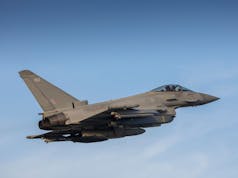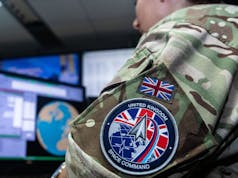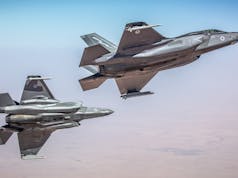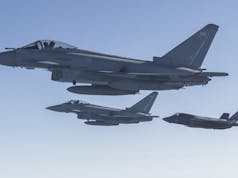HMS Prince of Wales has completed her participation in Exercise Strike Warrior, returning home after an intensive training deployment with NATO forces.
The carrier and her strike group covered over 1,500 nautical miles, conducting extensive air defence, anti-submarine, and live-firing drills designed to sharpen their combat readiness and strengthen integration with NATO allies.
✅Mission Complete!
🚢@HMSPWLS has returned after a successful Ex STRIKE WARRIOR, sailing 1,500 nautical miles.
✈️Her aircraft conducted 71 sorties accounting for 210 flying hours.
💪The Strike Group trained Air Defence, Anti-Submarine & Live firing on the @NATO deployment. pic.twitter.com/w5fGNgPSdr
— Defence Operations 🇬🇧 (@DefenceOps) November 1, 2024
During Strike Warrior, HMS Prince of Wales launched her aircraft in 71 sorties, accounting for 210 flying hours that involved complex, multi-threat scenarios. The exercise focused on joint air defence operations, anti-submarine tactics, and live-fire exercises, reinforcing the crew’s skills in protecting the strike group in varied operational environments.
This comprehensive training ensures the Prince of Wales and her strike group are equipped to handle the broad range of challenges they may face in the Indo-Pacific region next year.
The exercise also served as a critical component in bolstering interoperability with NATO partners, allowing HMS Prince of Wales to rehearse working alongside allied forces to secure shared strategic objectives. These operations provide an invaluable opportunity for integration and coordination ahead of the extensive journey to the Indo-Pacific.
HMS Prince of Wales
HMS Prince of Wales is one of two Queen Elizabeth-class aircraft carriers in the Royal Navy, commissioned in 2019 as part of the UK’s Carrier Strike capabilities. Measuring 284 metres in length and displacing around 65,000 tonnes, she is built to support a range of aircraft, primarily the F-35B Lightning II stealth fighter and various helicopters. The carrier’s unique twin-island superstructure is designed for improved operational flexibility, allowing distinct areas for ship control and flight operations.
Propelled by a combination of Rolls-Royce Marine Trent MT30 gas turbines and diesel generator sets, Prince of Wales can achieve speeds exceeding 25 knots and has a range of roughly 10,000 nautical miles. Her integrated electric propulsion enables efficient energy distribution for systems and offers a quieter operating profile, beneficial for anti-submarine activities. The flight deck can accommodate up to 40 aircraft, including the Merlin HM2 for anti-submarine missions and the Wildcat for reconnaissance, enhancing her versatility across multiple mission types.
The carrier is equipped with various defence systems, including the Phalanx Close-In Weapon System (CIWS) to counter airborne threats, as well as the Artisan 3D radar system for enhanced situational awareness. The vessel’s highly mechanised weapons handling system facilitates efficient transport of munitions between storage and the flight deck, designed to support sustained air operations. HMS Prince of Wales serves as a central platform for the UK Carrier Strike Group and is scheduled to lead the UK’s Carrier Strike deployment to the Indo-Pacific next year, demonstrating sustained operational reach and interoperability within allied frameworks.














Dunno, hope RN may deem it advisable to actually mount the 30 mm onboard PWLS before CSG-25 sails fo the SCS. 🤔🤞
If it comes down to this after all the escorts and bypassed it’s game up I’m afraid.
Pretty sure the presence of a few 30mm’s won’t change the PRC’s mind if they want a shooting war.
Absolutely, simply attempting to (marginally) reduce potential vulnerability.
If all these sorties were in 1 day then perhaps it would be noteworthy….and approaching the promise of the QE Class…but over an exercise that lasted from the 15th to 23rd October? i.e. 8 days….not in the slightest.
The QE Class as planned should, with its normal air group, be capable of generating 72 sorties per day…surging to 110 per day for a limited period….so over Strike Warrior it was operating at 1/8th of its originally planned capacity…
In a way it shows just how far we are off from getting the full potential from the QE Class and F-35 at present…remember the QE entered commission in 2017…with PoW commissioned in 2019…hopefully by the late 2020’s (but more likely the early/mid 2030’s) we might reach that level…I suspect we’ll need to have received Tranche 2 of the F-35 buy to get 74 a/c, have all upgraded to Block IV with all the additional weapons, FSS delivered and operational, RFA manpower issues sorted, T45 upgraded and T26 in service before we can really say that we’ve got there…
It does seem low given part of the deployment was for new pilots to get day/night carrier qualification in addition to the planned exercise requirements and the knowledge that 8 F35Bs were embarked,
Assuming 6 active days and 6 aircraft available each day for the serials that’s an average of 2 sorties per day per aircraft. That’s perhaps not unusual in the current climate.
I have no idea what the typical/maximum daily sortie rate was on QEC with 18 F35Bs embarked during the Indo-Pacific deployment.
Agreed, although there is the possibility that the spectre of confronting the PLAN on the high seas might incentivize HMG’s CSG maturation schedule. 🤔😉
Are we sure all these hours are fixed wing.
Hi Exroyal, flight hours are probably mixed fix/rotary wing unless stated otherwise by sqdn. involved. 👍. 🙃 🕳️ Btth.
We seem to be good at releasing stats like this with no breakdown. I for one would like to see the split between the two. Same with serviceability.
Appreciate your thoughts, but, In this case security first. And,we as Ex forces no longer privy. Annoying as it is. C’est la vie,mon Brave. 👌🎅🕳️Btth.
Security is always a concern. This is not OPSEC though. I think it is to limit legitimate questioning. The US publishes and are held to account by House and Senate committees. You can get US figures on availability and costs by type on open source. It does not hamper their operations. I honestly believe its to cover poor availability.
Knobody said it would be easy. Or quick. But the capability today already massively exceeds anything we have put to sea before. And only exceeded by the Americans. Which thankfully, are on our side. And as you pointed out. Much more to come.
France have more capability. China and India probably too.
No Alex. France has a part time carrier force. Rafale is an excellent fighter. But it cannot match F35’s capability. Stealth, survivability, BVR, sensor fusion, Networking and ISTAR capabilities are in another league. China is long way from a credible carrier capability. And it’s new aircraft might be called 5th gen, but they are along way behind western capability and engineering. I’d take an F16 over anything China has in service.
And I’d take a Typhoon with Meteor over an F16
Without a doubt.
You don’t have AEW, your carrier training started a couple years ago only, an F-35 was even ditched by a silly mistake.. F-35 is not a miracle and its AAM missiles have limited range compared to Meteor in Rafale
France have been in carrier business for decades , have E2D.
China are training with 2 carriers same with India, and all of them should have mor than LGB’s for anti shipping.
Simple top trumps stats do not make a carrier. An F35 would track, target and engage a Rafale before the Rafale pilot even knows he is being targeted. The beauty of all aspect stealth and the low probability of kill radar modes from the APG-81 and game changing situational awareness. And silly comments about an incident at sea shows you don’t understand carrier aviation. The Americans have still lost jets at sea after decades of carrier operations. Its dangerous, things can and will go wrong.
Fly Navy. 🎅👌🕳️Btth.
👍
How many 5th Gen fighters has France got on their two carriers? Or is it just one carrier?
French are not in a hurry to develop 5th gen, that leads me to think th moniker is not that important.
Bless the French, think they have taken the most expensive and risky option fancy carrier and carrier fighter still on drawing board.
One carrier only. The Charles de gaulle(“CdG”).
Agreed that is a serious weakness.
Yup, so attack when pang carrier is laid up having its mid life refuel of reactors.
>British carrier launches 71 aircraft sorties
I was hoping that was in a day! Not over a week or more. Also that total seems to include all aircraft sorties – Merlin, Wildcat, Chinook, Lightning … maybe even NH90.
The original 1998 Staff Target (Sea) 7068 set an objective for CVF of 150 sorties per day with 50 aircraft, this later becoming 130 sorties per day with 48 aircraft, including up to 110 by a Joint Combat Aircraft (JCA, now the F-35B).
The final User Requirements Document (URD) for CVF issued in early 2003 stated that the requirements for aircraft operations were:
Two decades later, meeting those requirements remains a fantasy.
Ta RB. Answered a few questions on this forum, and my mind too! 👏 🎅🕳️, FlyNavy.